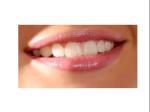Rethink Your Moisturizer
That light and creamy moisturizer you used all summer isn’t going to cut it when the weather is cold and dry and humidity levels are low. Find th e right moisturizer for your skin type and add a skin serum underneath for additional hydration. For example, if you have acne prone skin, try Bellanina Botanical Calendula Oil Free Crème using our Copper Peptide Serum as an additional hydrator underneath. For dry skin, you want to use a moisturizer with oils such as safflower or soybean. Our Restorative Marine Moisturizer with soybean oil is tops for hydrating in the cold winter months.
e right moisturizer for your skin type and add a skin serum underneath for additional hydration. For example, if you have acne prone skin, try Bellanina Botanical Calendula Oil Free Crème using our Copper Peptide Serum as an additional hydrator underneath. For dry skin, you want to use a moisturizer with oils such as safflower or soybean. Our Restorative Marine Moisturizer with soybean oil is tops for hydrating in the cold winter months.
Rethink How You Bathe
Although it is tempting to take a long, hot shower or bath when it is chilly outside, it prevents your skin from retaining all of the moisture it needs. A hot shower or bath affects the outer layer of the skin called the epidermis which has cells called keratinocytes. These cells, loaded with keratin (also found in hair and nails), provide the body’s defense against the outside environment and help to provide the barrier to allow your skin to retain moisture. In addition, your body produces a thin layer of oil on the skin’s surface to help this moisture retention.
Here’s what happens. The heat from your shower or bath softens your skin’s oils. Just think of how butter reacts when it is heated. When you add soap to the equation, your skin’s oil barrier can get quickly stripped away. Without these oils, the moisture in your skin escapes, leading to dryness and itching. The longer and hotter the shower, the faster this process takes place and the more moisture you’re likely to lose.
So, keep your shower or baths as brief as possible with lukewarm water. Don’t rub, but pat yourself dry and be sure to apply your body/face moisturizers within a minute after bathing while your skin is still slightly damp.
Exfoliation Is Even More Important In The Winter
Let’s talk about why. Cold, dry air coupled with intermittent bursts of hot, dry air indoor heating sucks the moisture out of cells, leaving skin feeling tight, dull and sometimes flaky. Cell turnover doesn’t actually slow down during the winter months, however, the weather extremes between hot and cold cause skin cells to ‘die’ faster as they dehydrate. As we age, our rate of skin cell turnover is reduced making exfoliation even more important.
Very gentle, exfoliation twice a week will wash away these dead cells at the surface, to reveal smoother, younger looking skin. Also, exfoliators improve the effectiveness of moisturizers. Since you will be using even more mo isturizing lotions and creams in the winter, you’ll want to exfoliate to maximize their hydrating potential.
isturizing lotions and creams in the winter, you’ll want to exfoliate to maximize their hydrating potential.
There are two main types of exfoliants: chemical and physical. Our Cosmeceutical Glycolic Cleanser is an example of a chemical exfoliant that contain glycolic acid. Our Jojoba Exfoliating Cleanser is a physical exfoliant that employs natural jojoba beads to “scrub” away the dead cells. It is always important to apply moisturizing cream or lotion to the skin immediately after exfoliation for the maximum hydrating effect.
Don’t Forget Your Lips
Always use lip balm or petroleum jelly to both moisturize and create a protective barrier between your lips and the cold, dry winter air. airlip balm when you are doing the rest of your skin care, make it part of your routine. If your lips are particularly chapped, you can make your own lip scrub to smooth aways the dead flaky skin. All you need to do is apply a generous amount of petroleum jelly to your lips and then rub them with a little sugar or a soft toothbrush using circular motions. Remember to be gentle and that all of the flaky skin may not come off in one treatment! You can also use our Vibran C lip treatment with lots of Vitamin C to repair your chapped lips.
balm when you are doing the rest of your skin care, make it part of your routine. If your lips are particularly chapped, you can make your own lip scrub to smooth aways the dead flaky skin. All you need to do is apply a generous amount of petroleum jelly to your lips and then rub them with a little sugar or a soft toothbrush using circular motions. Remember to be gentle and that all of the flaky skin may not come off in one treatment! You can also use our Vibran C lip treatment with lots of Vitamin C to repair your chapped lips.
Give Your Feet A Good Night’s Rest
For dry, callused feet, gently buff away the calluses with a pumice stone or foot scrub before bed. Immediately apply a thick moisturizer while your feet are still damp and wear socks made of natural fabric overnight. If that doesn’t do the trick, then up your game with an over the counter cream containing glycolic acid or urea that will exfoliate as well as moisturize. If you do that for a month, you should see some great results!












